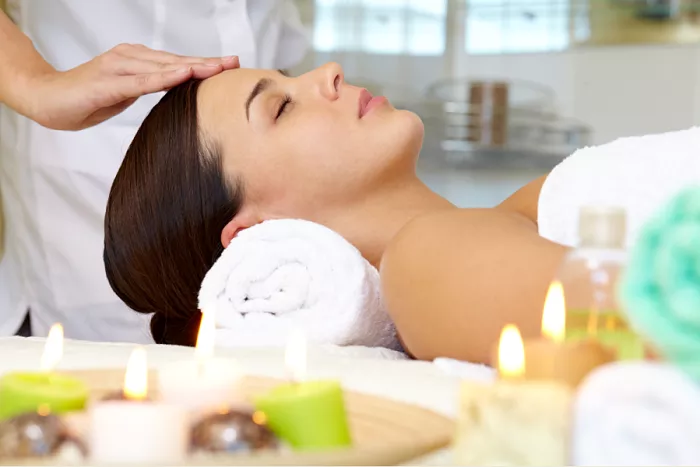Anxiety is one of the most common mental health challenges people face today. It can manifest as persistent worry, physical tension, and even panic attacks. While traditional treatments like therapy and medication are effective, many people seek complementary approaches to manage their symptoms. One such method is massage therapy.
But does massage really help with anxiety? The answer is yes, and science supports it. In this article, we will explore how massage affects anxiety, the best types of massage for relaxation, and how you can incorporate massage into your mental wellness routine.
Understanding Anxiety and Its Physical Effects
Anxiety is not just a mental experience: it has strong physical effects on the body. When a person feels anxious, their nervous system triggers the “fight or flight” response. This leads to increased stress hormones such as cortisol and adrenaline. Over time, chronic anxiety can contribute to:
- Muscle stiffness and pain
- Headaches and migraines
- Digestive issues
- Sleep disturbances
Because anxiety creates such a strong physical response, treatments that address both the mind and body—like massage—can be particularly helpful.
How Massage Therapy Reduces Anxiety
Massage does more than just relax sore muscles. Research shows it has several direct effects on anxiety:
Reduces Cortisol Levels
Cortisol is the body’s primary stress hormone. Studies have found that massage therapy lowers cortisol levels, helping the body shift out of a stressed state.
Boosts Serotonin and Dopamine
These neurotransmitters play a key role in mood regulation. Massage increases their production, which can lead to feelings of calm and happiness.
Activates the Parasympathetic Nervous System
This system controls the body’s “rest and digest” functions. Massage helps switch the body from high alert to deep relaxation.
Relieves Muscle Tension
Anxiety often causes muscle tightness, especially in the neck, shoulders, and back. Massage releases this tension, reducing physical discomfort.
A study published in the Journal of Clinical Psychiatry found that participants with generalized anxiety disorder (GAD) experienced significant symptom relief after regular massage sessions.
The Best Massage Techniques for Anxiety Relief
Different types of massage offer unique benefits for anxiety. Here are the most effective ones:
Swedish Massage
This is the most common form of massage. It uses long, flowing strokes to promote relaxation and improve circulation. Swedish massage is ideal for those new to massage therapy.
Deep Tissue Massage
This technique targets deeper layers of muscle and connective tissue. It is especially helpful for people who carry chronic stress in their muscles.
Aromatherapy Massage
Combining massage with essential oils like lavender or bergamot enhances relaxation. The scents have a calming effect on the nervous system.
Hot Stone Massage
Warm stones are placed on the body to loosen tight muscles and induce deep relaxation. The heat helps improve blood flow and reduce stress.
Reflexology
This method applies pressure to specific points on the hands and feet. Some believe it helps balance the body’s energy and reduce anxiety.
How Often Should You Get a Massage for Anxiety
The frequency of massage depends on your anxiety levels:
- For severe anxiety, weekly sessions may be most beneficial.
- For moderate anxiety, bi-weekly or monthly massages can help maintain relaxation.
- Even a single session can provide temporary relief from acute stress.
Consistency is key. Regular massage therapy can lead to long-term improvements in anxiety management.
Self-Massage Techniques for Anxiety Relief
If visiting a massage therapist isn’t possible, you can still reduce anxiety with self-massage. Here are some simple techniques:
Scalp Massage
Using your fingertips, gently rub your scalp in small circles. This can relieve tension headaches and promote relaxation.
Hand and Foot Massage
Apply firm but gentle pressure to your palms and soles. This can stimulate relaxation responses in the body.
Neck and Shoulder Massage
Knead the muscles at the base of your neck and along your shoulders. This helps release tension caused by stress.
Potential Risks and Who Should Be Cautious
Massage is generally safe, but certain individuals should take precautions:
- People with blood clotting disorders should avoid deep pressure.
- Those with severe osteoporosis should consult a doctor first.
- Pregnant women should seek a therapist trained in prenatal massage.
Always discuss with a healthcare provider if you have any medical concerns before starting massage therapy.
Combining Massage with Other Anxiety Treatments
For the best results, massage should be part of a broader anxiety management plan. Consider combining it with:
- Cognitive behavioral therapy (CBT)
- Mindfulness and meditation
- Regular physical activity
- A balanced diet low in caffeine and sugar
A holistic approach ensures long-term mental and physical well-being.
Conclusion
Massage therapy is a powerful tool for reducing anxiety. It lowers stress hormones, eases muscle tension, and promotes relaxation. While it is not a standalone cure, it is an excellent complement to traditional treatments.
If you struggle with anxiety, consider adding massage to your self-care routine. Whether you visit a professional or practice self-massage at home, the benefits are worth exploring.
Related topics:


